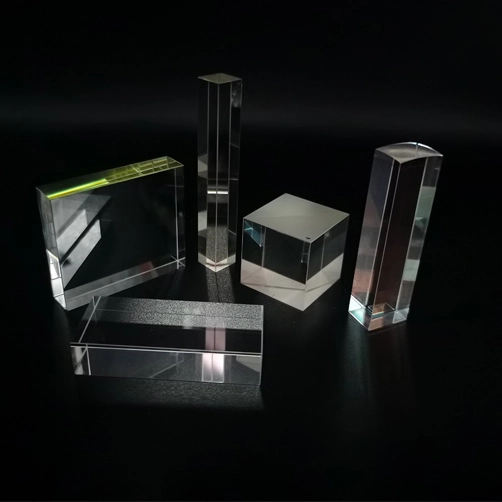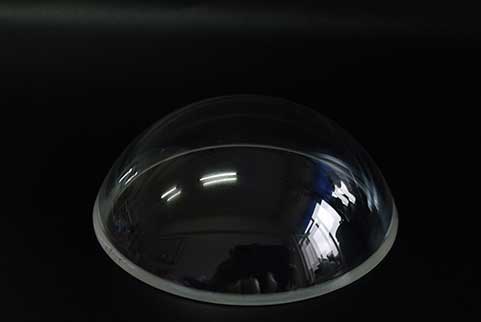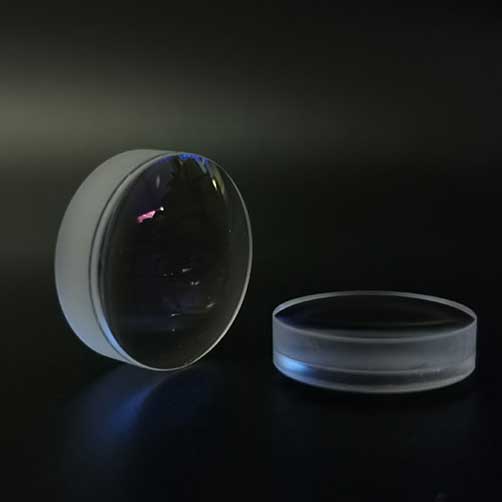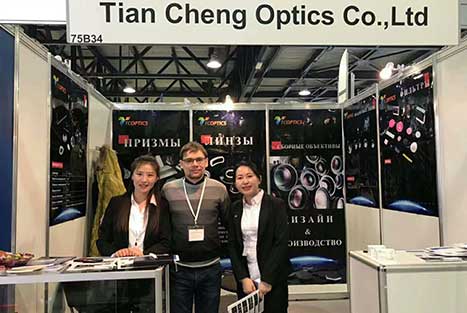
1. What is a right angle prism?
Right angle prisms are usually used to turn the light path or deflect the image formed by the optical system by 90°. Depending on the azimuth angle of the prism, images can be imaged left and right, but upside down and left and right images are reversed, and the scope of application is also very wide.
Right-angle prisms can also be used in applications such as combined imaging and beam shifting. Let's take a look at the specific classification and characteristics of right-angle prisms.
Right angle prisms can be divided into UV fused silica right angle prisms, N-BK7 right angle prisms, calcium fluoride right angle prisms, zinc selenide right angle prisms, germanium right angle prisms and other right angle prisms, let us see their specific features below.
2. UV fused silica right angle prism
Uncoated (185 nm-2.1 µm), UV Fused Silica Right Angle Prisms are an option if higher UV transmission or lower thermal expansion is required.
UV-grade fused silica has high transmittance in the deep UV, and almost no laser-induced fluorescence is measured in the 193 nm band with UV fused silica right-angle prisms.
It is therefore ideal for UV to NIR applications where the refractive index of UV fused silica is less than that of N-BK7 for a given wavelength.
3. N-BK7 right angle prism
Uncoated (350 nm - 2 µm), if the additional benefits of fused silica are not required, the N-BK7 right angle prism can be selected, N-BK7 has excellent transmission in the visible and near-infrared parts of the spectrum.
In addition, N-BK7 prisms are the choice for UV applications down to 350 nm, and right-angle prisms can be AR-coated if high transmission is required in the application.
4. Calcium fluoride right angle prism
Uncoated (180 nm-8 µm), calcium fluoride right angle prisms are available for applications requiring high transmission in the 180 nm to 8 µm wavelength range.
The calcium fluoride material has a low refractive index (1.35 to 1.51) in the wavelength range of 180 nm to 8 µm, and has a high laser damage threshold. Calcium fluoride is also chemically inert and has a higher hardness than barium fluoride, magnesium fluoride and lithium fluoride.
5. Zinc selenide right angle prism
Uncoated (600 nm-16 µm) ideal for optical use in the 600 nm to 16 µm range of zinc selenide, which is characterized by low absorption, including the red wavelengths of visible light, and good thermal shock resistance.
Zinc Selenide is well suited for use with CO2 lasers operating at 10.6 µm, including their HeNe counterparts.
Gloves should be worn when handling optical components, this is especially important when you are working with zinc selenide as the zinc selenide material is toxic.
To be safe, take all specific defenses, including wearing gloves when handling the prism and washing your hands before using it. Due to the low hardness of zinc selenide, careful handling is required to avoid damage to these prisms.
6. Germanium right angle prisms
Uncoated (2-16 µm), suitable for infrared applications due to germanium's wide transmission range (2-16 µm) and opaque in the visible spectrum, the substance is resistant to air, water, alkalis and acids (nitric acid) except) is inert.
The light transmission properties of germanium are greatly affected by temperature, germanium is almost opaque at 100°C, and completely opaque at 200°C, please wear gloves when using it, because germanium is also toxic.



